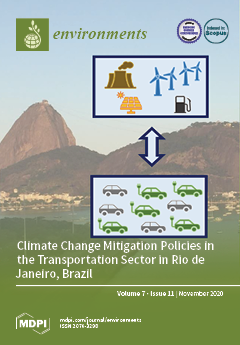Production, processing, transporting, selling, and consumption of food are highly resource intensive. Therefore, if they are not well managed the consequences for the environment are far-reaching. This study aimed at investigating behaviors and attitudes of the Croatian population concerning the influence of environmental
[...] Read more.
Production, processing, transporting, selling, and consumption of food are highly resource intensive. Therefore, if they are not well managed the consequences for the environment are far-reaching. This study aimed at investigating behaviors and attitudes of the Croatian population concerning the influence of environmental and political determinants of food choices, and the socio-demographic factors associated with pro-environmental behavior. Data analysis involved a non-probabilistic sample of 1534 adult participants from Croatia who responded to a validated questionnaire from November 2017 to March 2018. To test differences between sociodemographic groups, Welch’s
t-test (two groups) and ANOVA (multiple groups) were used. The relationship between age and motivators of food choices was analyzed with Pearson’s
r correlation coefficient. Participants reported a neutral rate of agreement with the items, with the exception of items related to food waste and food origin, for which they expressed a moderate amount of agreement. Socio-demographic factors that influence environmentally or politically concerned food choices in our study were age (older participants,
p < 0.001), gender (women in comparison to men,
p < 0.05), education level (higher education in comparison to elementary/high school,
p < 0.05), marital status (married/cohabiting in comparison to unmarried,
p < 0.05), responsibility for food supply (those who are responsible for food supply in comparison to those who are not responsible for food supply,
p < 0.05), eating practices (participants with specific eating practices in comparison to participants without specific eating practices,
p < 0.05), and smoking (those who have never smoked score and those who used to smoke in comparison to active smokers,
p < 0.05). The results show that there are no statistically significant differences in environmental and political determinants of food choices based on the place of residence and employment status. The findings indicate that environmental and political determinants do not play a significant role in the food choices among the Croatian population.
Full article





